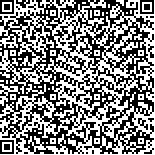| 本文已被:浏览 1365次 下载 791次 |

码上扫一扫! |
|
|
| 台风条件下ERA5再分析数据对中国近海适用性评估 |
|
李爱莲1,2, 刘泽1,3,4, 洪新5, 侯一筠1,3,2,4, 管守德3,6
|
|
1.中国科学院海洋研究所 海洋环流与波动重点实验室, 山东 青岛 266071;2.中国科学院大学, 北京 100049;3.青岛海洋科学与技术试点国家实验室海洋动力过程与气候功能实验室, 山东 青岛 266237;4.中国科学院海洋大科学中心, 山东 青岛 266071;5.国家海洋局烟台海洋环境监测中心, 山东 烟台 264006;6.中国海洋大学 物理海洋学实验室, 山东 青岛 266100
|
|
| 摘要: |
| 2019年第9号台风“利奇马”是自1949年以来在浙江登陆的第三强台风,对中国近海沿岸地区造成了巨大的经济损失以及人员伤亡。为了研究ERA5再分析数据在渤黄东海的适用性,本文利用统计方法,针对台风“利奇马”期间位于渤海(QF104)、黄海(QF108)和东海(QF5003)的三套浮标观测数据对ECMWF最新推出的ERA5再分析数据进行评估分析。评估结果表明:1) ERA5再分析风速、风向、有效波高数据与浮标观测数据的匹配度较好,平均周期与海面温度数据次之;2)ERA5再分析平均波向数据相对平滑,而实测数据波动性大,两者之间的相关性有待进一步提高。 |
| 关键词: 台风“利奇马” ERA5再分析资料 浮标观测 10 m风速 有效波高 海面温度 |
| DOI:10.11759/hykx20200502001 |
| 分类号: |
| 基金项目:国家自然科学基金项目(U1706216,41876011);国家重点研发计划项目(2017YFC1404101,2018YFC1407003);中国科学院海洋大科学研究中心重点部署项目(COMS2019J02);印-太海洋环境变异与海气相互作用(GASI-IPOVAI-01-03,GASI-IPOVAI-01-06);中国科学院战略重点项目(XDA19060502) |
|
| Applicability of the ERA5 reanalysis data to China adjacent Sea under typhoon condition |
|
LI Ai-lian1,2, LIU Ze1,3,4, HONG Xin5, HOU Yi-jun1,3,2,4, GUAN Shou-de3,6
|
|
1.Key Laboratory of Ocean Circulation and Waves, Institute of Oceanology, Chinese Academy of Sciences, Qingdao 266071, China;2.University of Chinese Academy of Sciences, Beijing 100049, China;3.Laboratory for Ocean and Climate Dynamics, Qingdao National Laboratory for Marine Science and Technology, Qingdao 266237, China;4.Center for Ocean Mega-Science, Chinese Academy of Sciences, Qingdao 266071, China;5.Yantai Ocean Environment Monitoring Center Station of State Oceanic Administration, Yantai 264006, China;6.Physical Oceanography Laboratory/IAOS, Ocean University of China, Qingdao 266100, China
|
| Abstract: |
| Typhoon ‘Lekima’ (2019) has been the third strong typhoon landfall in the Zhejiang Province since 1949, which has caused huge economic losses and casualties in coastal areas of China. In this paper, three sets of buoy observation data of the Bohai Sea (QF104), Yellow Sea (QF108), and East China Sea (QF5003) during typhoon ‘Lekima’ are used to evaluate the latest ERA5 reanalysis data of ECMWF. Results show that:1) The ERA5 reanalysis wind speed, wind direction and significant wave height data match well with buoy observations, followed by the ERA5 reanalysis average period and sea surface temperature data; 2) The ERA5 reanalysis average wave direction data is relatively smooth, but the measured data is volatile, which means that the correlation between the ERA5 reanalysis average wave direction data and observations must be improved. |
| Key words: typhoon ‘Lekima’ ERA5 reanalysis data buoy observation 10 m wind speed significant wave height sea surface temperature |
